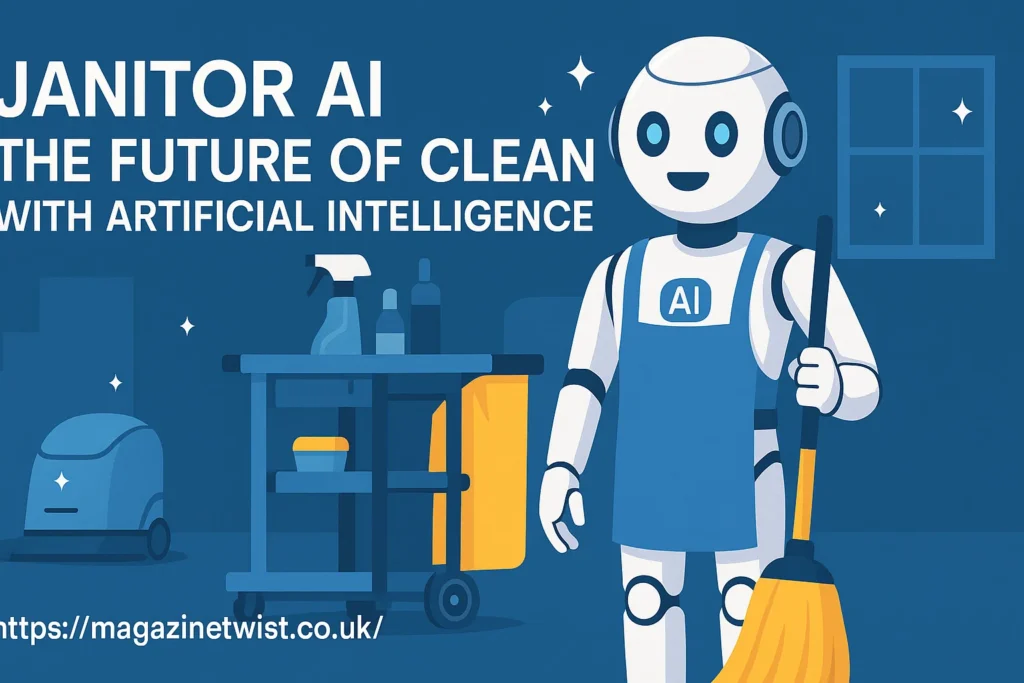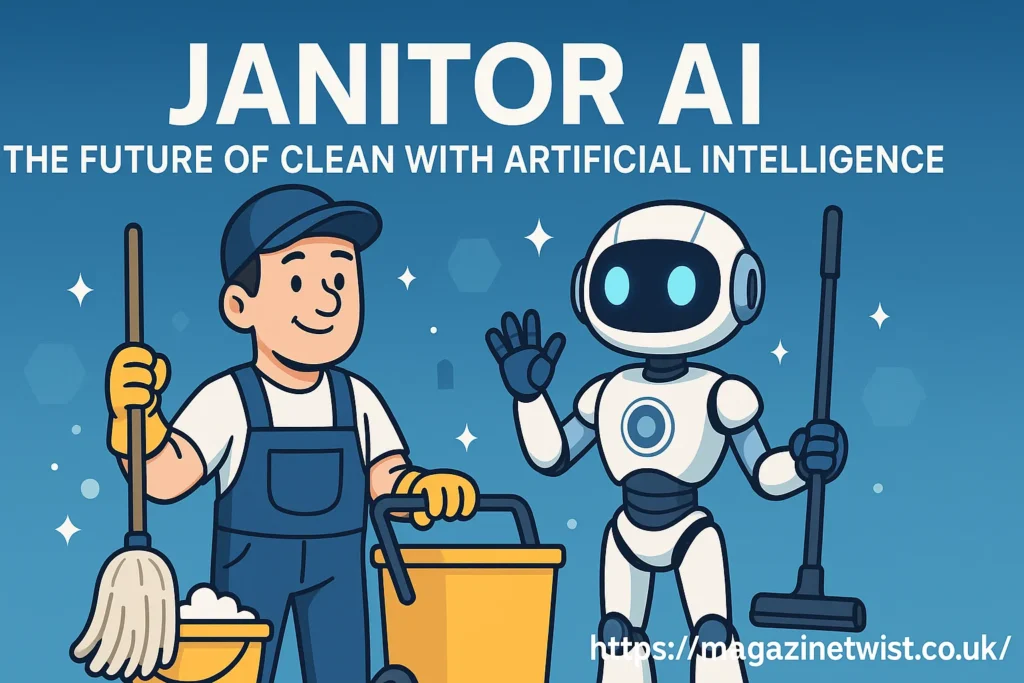Janitor AI: The Future of Clean with Artificial Intelligence

Janitor AI in a world where automation and artificial intelligence are increasingly becoming part of daily operations, the cleaning industry is undergoing a quiet revolution. The introduction of Janitor AI—artificial intelligence-powered cleaning systems—marks a significant milestone in how we approach hygiene, maintenance, and sanitation. No longer limited to brooms and buckets, janitorial services are being transformed by algorithms, sensors, and smart robotics that can clean more efficiently, predict maintenance needs, and adapt to dynamic environments.
What is Janitor AI?
Janitor AI refers to the use of artificial intelligence technologies in cleaning and maintenance operations. These systems include autonomous robots, machine learning algorithms, computer vision, and Internet of Things (IoT) devices that collaborate to perform janitorial tasks. Unlike traditional cleaning equipment, Janitor AI can analyze its surroundings, make decisions in real time, and improve its performance through data-driven learning.
From vacuuming floors and disinfecting surfaces to identifying trash and managing waste, It offers an all-in-one solution for maintaining cleanliness in commercial, industrial, and even residential spaces. The goal is not just automation but intelligent automation—where systems don’t just perform tasks, but learn how to do them better.
Components of a Janitor AI System

To understand how it works, it’s essential to break down its core components:
- Autonomous Robots: These machines physically carry out cleaning tasks. They come equipped with wheels, arms, and cleaning tools such as mops, vacuums, or brushes.
- Sensors & Cameras: These elements help the robot perceive its environment. Lidar, infrared sensors, and high-resolution cameras allow the system to detect obstacles, map areas, and identify objects.
- AI & Machine Learning: These algorithms analyze data, optimize cleaning routes, and adapt to changing conditions. Over time, the system becomes more efficient.
- IoT Integration:It can connect to building management systems and other smart devices for a cohesive cleaning strategy.
The Rise of Smart Cleaning in Commercial Spaces
Offices, malls, airports, and hospitals are among the first to adopt it technologies. These environments demand constant upkeep and hygiene, which traditional methods often struggle to deliver without significant manpower. Janitor AI provides consistency and reduces human error.
In large facilities, cleaning staff may miss spots or follow inefficient paths. Janitor AI robots, on the other hand, follow optimized routes, identify areas that need special attention, and work around the clock. Some can even return to their docking stations for recharging without human intervention.
Benefits of Janitor AI
Adopting Janitor AI can bring about transformative benefits:
- Efficiency: Robots don’t get tired, don’t take breaks, and can work continuously. They clean faster and more precisely.
- Cost Savings: While initial investments are high, operational costs decrease over time due to reduced labor requirements and improved efficiency.
- Data Analytics: AI systems collect valuable data about cleaning habits, high-traffic areas, and maintenance needs. This data enables better planning and resource allocation.
- Health & Safety: With the ability to disinfect surfaces thoroughly, Janitor AI contributes to healthier indoor environments, especially important post-COVID-19.
- Eco-Friendly: Many systems optimize water and chemical usage, reducing environmental impact.
Challenges and Limitations
Despite its advantages, It is not without limitations:
- High Initial Cost: Advanced robotics and AI software can be expensive to implement.
- Complex Environments: Navigating crowded or cluttered spaces can still be a challenge for AI.
- Job Displacement: There’s concern about AI replacing human janitors, although many argue it complements their work rather than replacing it.
- Technical Issues: Sensors can fail, software can crash, and robots require maintenance.
Janitor AI in Healthcare
One of the most impactful applications of Janitor AI is in the healthcare industry. Hospitals require stringent hygiene standards to prevent infections. AI-powered robots can sterilize rooms, wipe down surfaces, and monitor air quality—all without risking human exposure to harmful pathogens.
Some advanced Janitor AI systems in hospitals are even programmed to handle biohazard waste and can be integrated with patient data systems to prioritize cleaning in areas with high infection rates. The ability to operate 24/7 makes them indispensable in busy medical environments.
Education and Janitor AI
Schools and universities benefit immensely from Janitor AI. With hundreds or thousands of students and staff members passing through campuses daily, maintaining cleanliness is both crucial and challenging. AI robots can disinfect classrooms overnight, sanitize high-touch surfaces, and ensure restrooms remain clean throughout the day. This reduces the spread of illness and contributes to a more conducive learning environment.
Hospitality and Public Venues
Hotels, event centers, and cinemas are turning to Janitor AI to maintain a welcoming appearance. In these settings, cleanliness directly affects customer satisfaction. Autonomous robots can vacuum carpets, clean lobbies, and even alert human staff when something needs manual attention. Some systems are discreet enough to operate during events without disturbing guests.
Future Outlook: The Evolution of Janitor AI
The future of Janitor AI is promising. As technologies mature and become more affordable, we’ll see broader adoption across various sectors. Some exciting trends include:
- Swarm Robotics: Coordinated groups of robots working together to clean large areas efficiently.
- AI-as-a-Service (AIaaS): Leasing AI cleaning solutions rather than purchasing them outright, making them accessible to smaller businesses.
- Smart Integration: Full integration with HVAC systems, lighting, and security for a holistic approach to building maintenance.
Research is also underway to improve AI understanding of complex environments. Soon, we may see Janitor AI systems capable of performing minor repairs, reporting safety hazards, or adjusting their behavior based on human feedback.
Ethical and Social Considerations

While Janitor AI enhances productivity, ethical considerations remain. How will the shift affect employment in cleaning sectors? Will data privacy be protected in environments where robots are constantly collecting information? Policymakers and businesses must address these concerns proactively, ensuring fair transitions and responsible use.
Training and upskilling programs can help displaced workers move into roles such as AI system supervision, robot maintenance, or data analysis. In this way, Janitor AI can be part of a larger evolution in workforce dynamics rather than a threat.
Conclusion
Janitor AI represents the convergence of robotics, artificial intelligence, and smart infrastructure. By automating repetitive and essential tasks like cleaning, these systems offer safer, more efficient, and more consistent results. From hospitals and schools to malls and office buildings, the impact of Janitor AI is profound and growing.
As the technology continues to evolve, so too must our approach to implementation, ethics, and workforce integration. The future of clean isn’t just shiny floors and spotless windows—it’s intelligent, responsive, and sustainable. Janitor AI is more than a technological marvel; it’s a glimpse into how our built environments will operate in the years to come.



